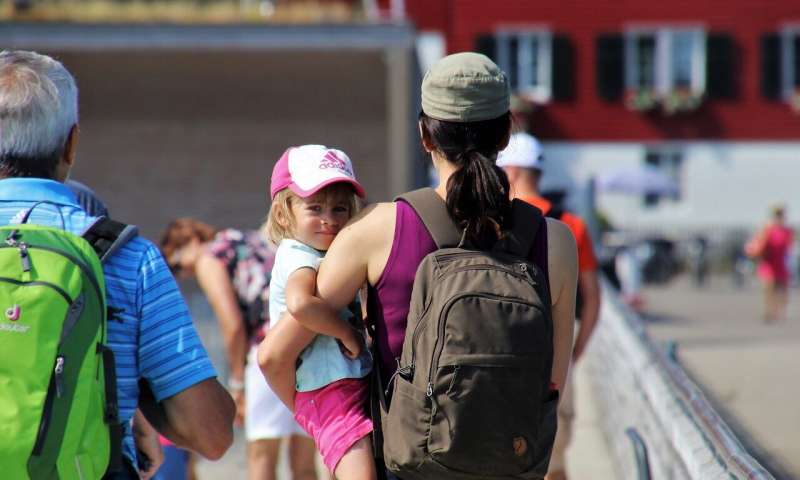
Child care programs can be safe within the context of low community transmission of COVID-19, according to new research from Case Western Reserve University, based on data from child care programs throughout Ohio.
The study took place from Aug. 15 to Nov. 20, during a timeframe of relatively low community transmission of COVID-19. The team found COVID-19 infection rates at child care programs have been low as a result of:
- clear and comprehensive state guidelines for mitigating transmission within child care settings;
- streamlined reporting of cases to monitor trends;
- resources to support adherence to state guidelines; and
- high compliance with these guidelines by child care workers and families.
The Case Western Reserve study was funded by the Ohio Bureau of Workers’ Compensation (BWC) and supported by the Ohio Department of Job and Family Services (ODJFS). The study relied on a sample of child care facilities that mirrors a mix of urban, suburban, and rural settings found across the country, offering insight into child care experiences nationally.
Additional findings from the ongoing study will provide another look as community transmission rates rise, with data collection continuing until the end of December. These new findings will be released in early 2021.
“We all have seen reports from across the country of vast numbers of parents—mostly women—dropping out of the workforce during the pandemic to care for their children as schools and child care facilities closed,” said Darcy Freedman, professor of Population and Quantitative Health Sciences at the Case Western Reserve School of Medicine and director of the Mary Ann Swetland Center for Environmental Health, who served as the principal investigator of the study. “How to reopen and stay open safely is important to tens of thousands of families across the state and hundreds of thousands of families across the country.”
The findings show that child care programs in Ohio may have had higher readiness to handle COVID-19 than other sectors of the economy because of already-existing standards designed to promote safe and healthy environments, Freedman said. These, combined with statewide infection control guidelines adopted with high compliance by child care workers and families, resulted in lower levels of COVID-19 transmission within child care settings during the study’s initial phase through early November.
But Freedman cautioned that additional supports, such as steady access to affordable personal protective equipment (PPE) and sanitizing materials, may be needed for child care programs to remain vigilant as the COVID-19 epidemic continues.
Case Western Reserve researchers note that public health officials anticipate that even with the distribution of a vaccine, communities across the country may continue to see consistent low to moderate community transmission rates through 2021.
From the start of the pandemic in March 2020 until Nov. 13, less than 1% of all COVID-19 cases in Ohio were among child care workers and children affiliated with child care programs, based on incident reporting from child care programs to ODJFS. During most of the study’s timeframe, COVID-19 positivity rates in Ohio were below the 5% threshold used to establish low risk of community transmission. COVID-19 positivity rates in Ohio began rising above 5% starting Oct. 20.
“Maintaining safety within child care programs requires capacity for staff and families to fully adhere to mitigation strategies, both within child care programs and outside in the community,” Freedman said.
More than 6,000 child care programs are licensed in the state. Pre-pandemic, these facilities cared for more than 500,000 children each day. The Case Western Reserve survey of parents participating in this study noted that shuttering child care programs due to COVID-19 transmission would have the following results:
- Nearly 75% of families would have to reduce their work hours.
- More than half of families—59%—would need one person in the household to leave the workforce to stay home with children.
Key recommendations based on the study findings:
- Maintain child care capacity to fully comply with COVID-19 mitigation strategies;
- Develop a supply chain for affordable personal protective equipment and cleaning materials, allowing child care programs to uphold rigorous hygiene and sanitizing procedures;
- Standardize communication about COVID-19 disseminated through child care programs;
- Expand workforce pipeline for child care staffing during the pandemic.
Source: Read Full Article
